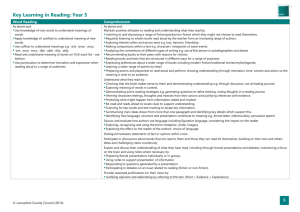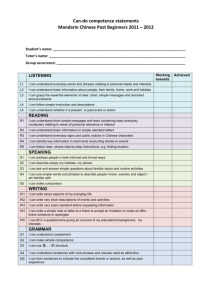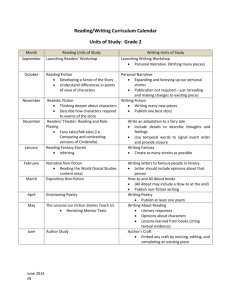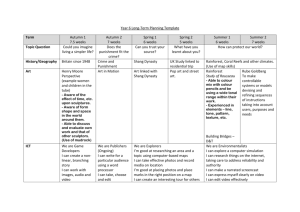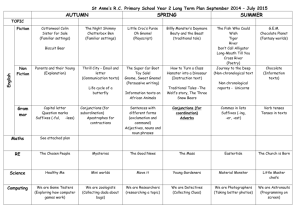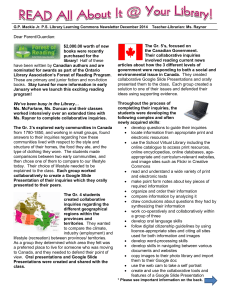Reading Scope and Sequence - The Helpful White
advertisement
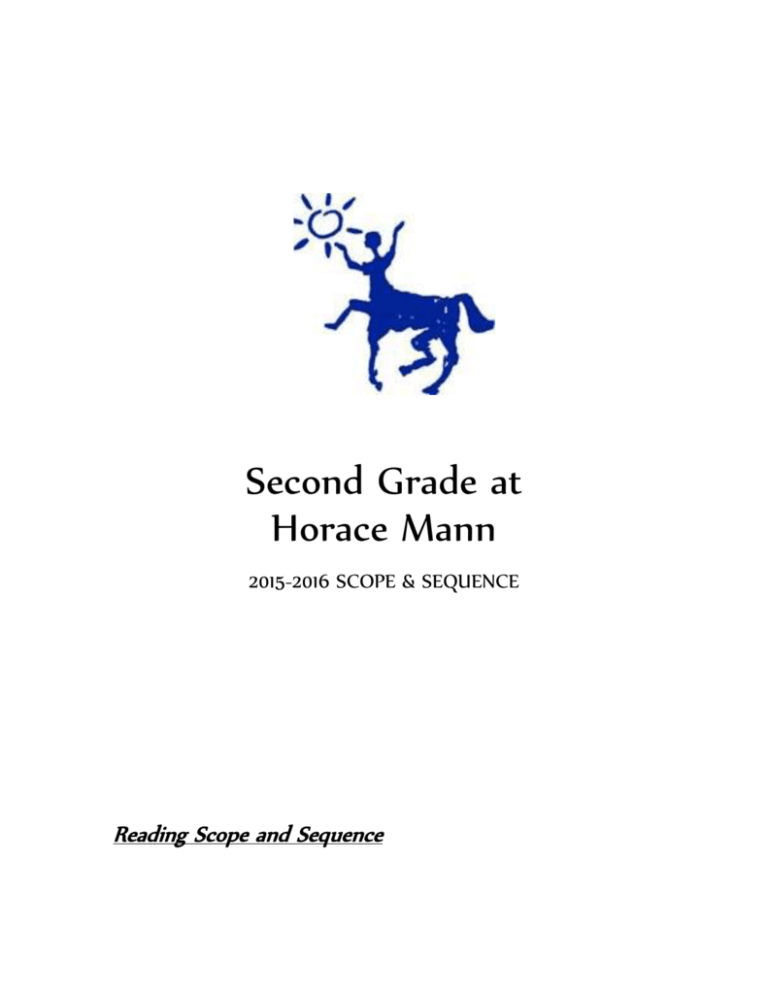
Second Grade at
Horace Mann
2015-2016 SCOPE & SEQUENCE
Reading Scope and Sequence
“Let’s Get Lost in Books!” and “Solving Tricky Words”
August - October
Launching with routines, Accountable Talk, and solving tricky words in fiction and non-fiction texts
“Story Structure”
October - November
Comprehending fiction texts, ask and answer questions, and make inferences by exploring story
structure, including a text’s characters, setting and plot
“What Do You Wonder About?”
November - December
Gather new information from informational, non-fiction texts through varied text features, connecting
that information, then stating the main topic and purpose
“Finding a Point of View: Characters and Poetry”
January - February
Learning about characters within fiction texts, poems and song lyrics in order to understand their
feelings, behavior, choices, relationships, and differing points of views.
“Biographies and Heroes”
March - April
Connect information in biographies or autobiographies and supply evidence proving whether the text is
about a hero or not, and practice comparing and contrasting information presented in two texts about
the same person
“Traditional Literature Around the World”
May – June
Finding the central message, moral or theme of texts, as well as exploring, comparing, and contrasting
folk tales and fairy tales from around the world with a special focus on trickster tales
Writing Scope and Sequence
“Getting to Know Our Friends and Families: Biographies of People We Know”
August - October
Learning about the writing process and our Writing Workshop routines by planning, gathering
information about someone we care about, organizing that information and then teaching facts about,
telling stories, and sharing our opinions about that person in a book
“Persuasive Writing”
October - November
Using our knowledge or our opinions, supported by evidence, to persuade and change the minds of our
readers
“Realistic Fiction”
November - December
Writing with focus, detail and structure while using our lives and imaginations to create realistic works
of fiction from creating characters to inventing a problem with rising action and a solution
“Express Yourself”
January - February
Using our “poets’ eyes” to look at our lives in a new way with line breaks, rhyme, simile, metaphor, and
personification or using what we’ve learned about story structure and narrative writing, create stories,
poems, or songs about our many points of view
“All About Books”
March - April
Teaching something we know all about—a person, place, or thing—by organizing our information into
chapters with headings, an introduction, concluding statements, illustrations, captions, text boxes,
diagrams, indexes, and glossaries, as well as practicing stating points and supporting them with evidence
“Small Moment Narratives”
May - June
Writing with focus and purpose by zooming into the most important parts of the true stories in our
lives; adding detail with dialogue, internal thinking, feelings, descriptions using our five senses, and lots of
action, as well as providing a sense of closure in the end. Emphasis placed on deciding which stories we
choose to tell, playing with point of view, and showing lessons learned
Social Studies Scope and Sequence
“Building Our Classroom Community”
August – October
Creating hopes and dreams and class rules; understanding laws and
consequences, conflict resolution, and self-control
“Democracy in Action: Communities Make Decisions”
October - November
Understanding a community, its residents and the residents’ roles, rights and responsibilities,
forming a democratic government, running for office, and solving a community problem
together; learning about other types of governments from around the world to compare and
contrast them
“Native American Culture and History”
December - February
Exploring Native Americans’ varied cultures in history and today; understanding the role the
landscape, climate and local resources played in the diversity of those cultures and life ways
“Ancestor Adventure”
February - April
Discovering immigration, citizenship, and the many diverse cultures that make up the United
States today through an exploration of our ancestors’ countries and cultures; studying and
reading maps
“Heroes”
April - May
Exploring the qualities and actions it takes to be a hero through biography and autobiography
Math Scope and Sequence
Basic Facts
{Units 2 & 3 in Everyday Math}
August - October
Learning and practicing strategies to mentally and fluently add and subtract within 20, understanding
even and odd numbers, understanding number patterns, and skip counting
Place Value and Measurement
{Chapter 4 in Everyday Math}
October - November
Understanding place value then using this knowledge to compare numbers, measuring with accuracy, and
telling time to the nearest 5 minutes
2 & 3-Digit Addition/Subtraction {Chapters 5 & 6 in Everyday Math}
November - January
Adding and subtracting with two- and three-digit quantities using number sense and an understanding
of place value, exploring various strategies to solve number stories, and working with money
Measurement and Data {Chapter 7 in Everday Math}
February - March
Measuring with yards and meters, generating and representing data, and using data to learn about each
other and to establish a context for discussing numbers
Geometry and Arrays
{Chapter 8 in Everyday Math}
March - April
Recognizing and drawing 2-dimensional and 3-dimenionsal shapes based on specified attributes and an
introduction to multiplication and division
Fractions and a Review {Chapter 9 in Everyday Math}
May - June
Work with equal groups, arrays, and a review of second grade math concepts


